Happy Cosmic Valentine’s Day!
Do you think Valentine’s Day is out of this world? Are you over the moon for science? So is Slate’s
astronomy blogger, Phil Plait. Last year he put together a gallery of
cosmically great photos of moon craters and colliding galaxies that just
happen to be in the shape of a Valentine heart. Since photos don’t die
like flowers or get stale like chocolate, we are republishing them
below. Happy Valentine’s Day.
The Universe loves us!
The Universe loves us!
Well, not really. It’s more that natural events and forces create
cosmic shapes that we interpret through millennia of evolutionary,
psychological, and cultural adaptations.
But that’s hardly romantic. Don’t let stereotypes fool you:
Scientists are just as influenced by emotions as anyone else. And since
it’s Valentine’s Day, here is a bouquet of a dozen astronomical images
that fit the theme of the day, brought to you by telescopes, space
probes, and our weird brains that like to see hearts everywhere.
----
Happy Valentine's Day from Spitzer Space Telescope! This is an infrared view
of a cloud of gas and dust called W5, part of a far bigger complex
shining 6,000 light years away in the constellation of Cassiopeia. The
resemblance to a valentine is remarkable.
What you're actually seeing here is an enormous star-forming factory
150 light years across. Deep in its heart—“heart”! Oh man, I kill me!—
massive, hot, and bright stars are forming. When they switch on for the
first time, they blast out a flood of ultraviolet light as well as a
fierce wind of subatomic particles. These eat away at the cloud from the
inside out, forming an enormous cavity. It's the edges of this cavity
that form the cosmic valentine … trillions of kilometers across.
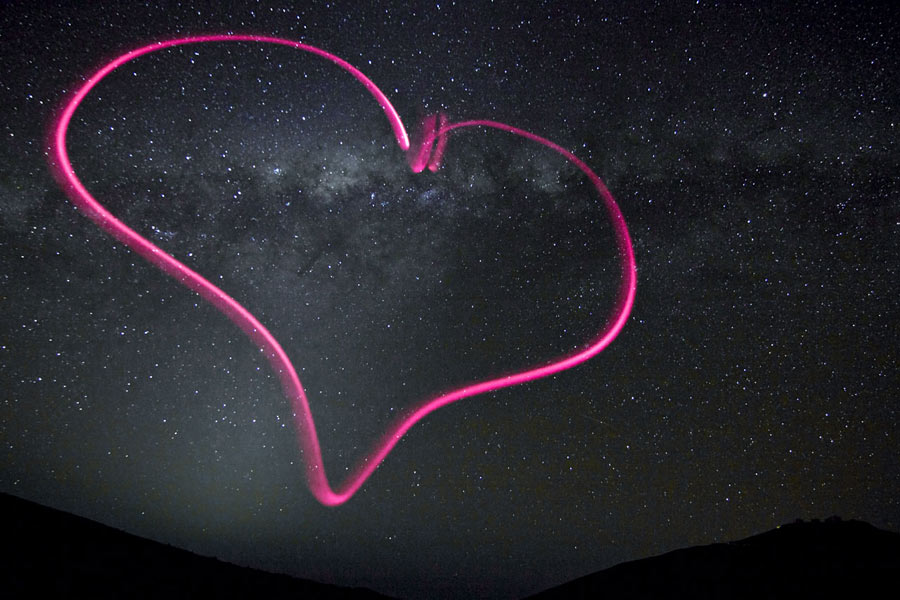
Photo by Julien Girard
Photographer Julien Girard took this picture
of the Milky Way looming over the Paranal observatory in Chile, home of
the Very Large Telescope. During the 25-second exposure, he stepped
into the field of view and used a small flashlight to express his love
of astrophotography.
The full Moon is romantic, but if you zoom in on the right spot,
you can see our nearest celestial neighbor has its heart in the right
place. This 120-meter-wide crater may have involved a double impact of
some kind to get its valentine shape; perhaps a binary asteroid slamming
into its surface ages ago. The event excavated lighter-colored material
from under the surface, blasting it out over the older, darker surface
dust and rock.
Was it formed by two separate bodies held together by gravity, or one
that broke apart shortly before impact? It’s hard to say. Given the
valentine metaphor, I guess it depends on whether you’re a romantic or a
cynic.
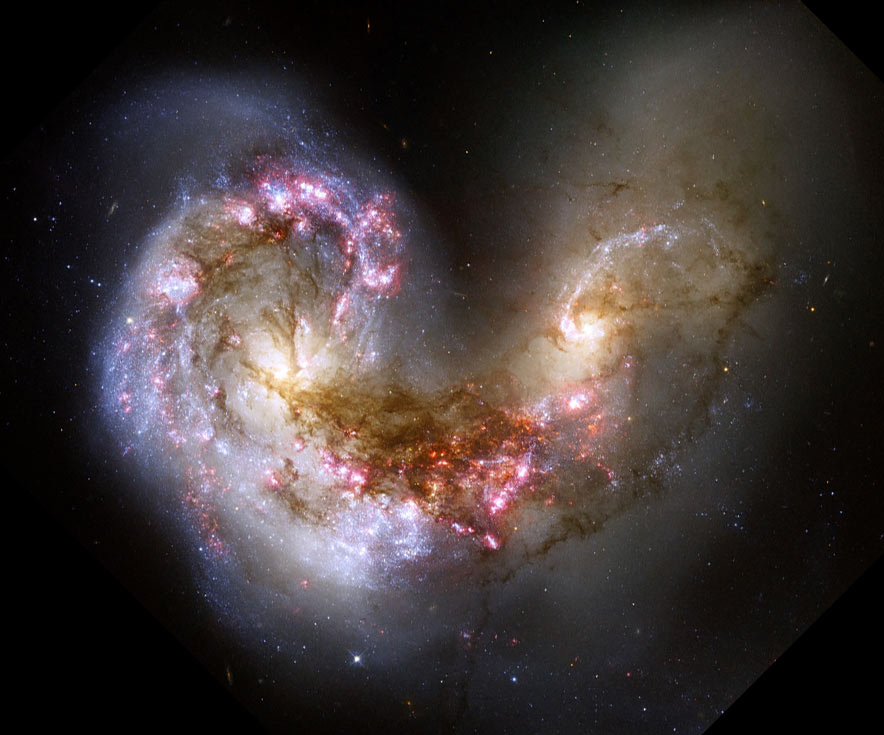
Photo by NASA, ESA, and the Hubble Heritage Team STScI/AURA)-ESA/Hubble Collaboration.
Acknowledgement: B. Whitmore (Space Telescope Science Institute) and James Long (ESA/Hubble).
I know some folks with big hearts, but they don't even come close to the Antennae Galaxies: two colliding galaxies 45 million light years away and tens of thousands of light years across!
These were probably two normal spiral galaxies, not too much
different than our own Milky Way, when they began this celestial dance
millions of years ago. Their combined gravity twisted and distorted
their shape into what we see today.
Individual stars are too small to physically smack into one another,
but giant clouds of dust and gas are much bigger targets. When they
collide at these speeds (hundreds of kilometers per second!) they
compress, collapse, and undergo a burst of star formation. All those
pinkish clumps you see in this Hubble Space Telescope picture are
millions of stars being born.
Eventually the galaxies will combine, the two melding into one bigger
galaxy. A metaphor for Valentine's Day? Well, no, since the merger will
be a vast chaotic realm of high-energy outbursts, massive turbulence,
and an unpredictable future.
Oh, wait.
In general, I would've thought valentine-shaped features on other
planets would be rare, but that's because I'm a cold-hearted,
calculating scientist. Turns out I'd be wrong, as this collage of pictures from the Mars Global Surveyor shows.
These are all either mesas (raised eroded features) or depressions on
Mars. My favorite has to be the perfectly-shaped, light-colored tiny
heart mesa at the bottom of the crater in picture R09-02121 at the upper
right. It's just adorable … even though it's roughly the same size as a
football stadium, and the event that formed it was an impact-generated
explosion similar to that of a nuclear bomb!
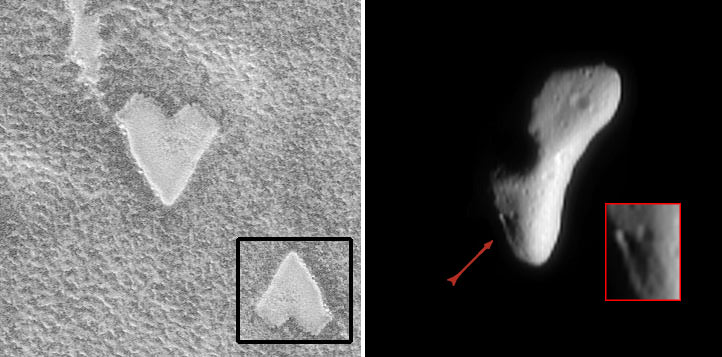
Eros: NEAR Project (JHU/APL); Mars: NASA/JPL/Malin Space Science Systems
Here’s a twofer.
On the left, this lovely heart on Mars
is neither a crater nor a pit: It’s actually a mesa, a raised feature
on the surface. It looks like a pit in the big picture due to a
well-known illusion; if lit from below, a depression looks like a raised
feature, and vice-versa. I inset a flipped version of it, where you can
more plainly see it’s a mesa, not a depression. Fooling our brains is
easy to do with the right lighting and setting. Another Valentine’s Day
metaphor? Make of it what you will.
On the right is a cool coincidence. On Feb. 14, 2000 —yes, on
Valentine's Day—the space mission called Near-Earth Asteroid Rendezvous
(or NEAR) entered into orbit around the asteroid named 433 Eros. This
spud-shaped rock is 34 x 11 x 11 kilometers (21 x 7 x 7 miles) in size,
and sometimes approaches near the Earth (though we’re in no danger of it
hitting us).
As NEAR approached Eros, it snapped this shot
of a feature at one end (I inset a zoomed-in picture on the lower
right). It's actually three separate craters, lit by the Sun in just
such a way as to resemble … well, you know.
And while it's a funny coincidence that NEAR went into orbit on
Valentine's Day, it may be an even better one that Eros itself is named
after the Greek god of love. Well, um, physical love, but you get the meaning.
This heart
may look like a crater on the surface of Mars, but it’s actually a
collapsed pit. It formed inside a long trough called a graben, a crack
or fracture that forms along fault lines.
This unnamed pit is about 2.3 kilometers (1.4 miles) across at its
widest point and appears to have quite a bit of sand and other windblown
debris on its floor.
If you look at the top left lobe, along the pit wall, you can see a
meandering darker streak with a boulder at the left end; it looks like
the rock must have rolled across the slope there, leaving that trail
behind. If this is some kind of metaphor for following a wandering path
to love, I leave it to you to find it.
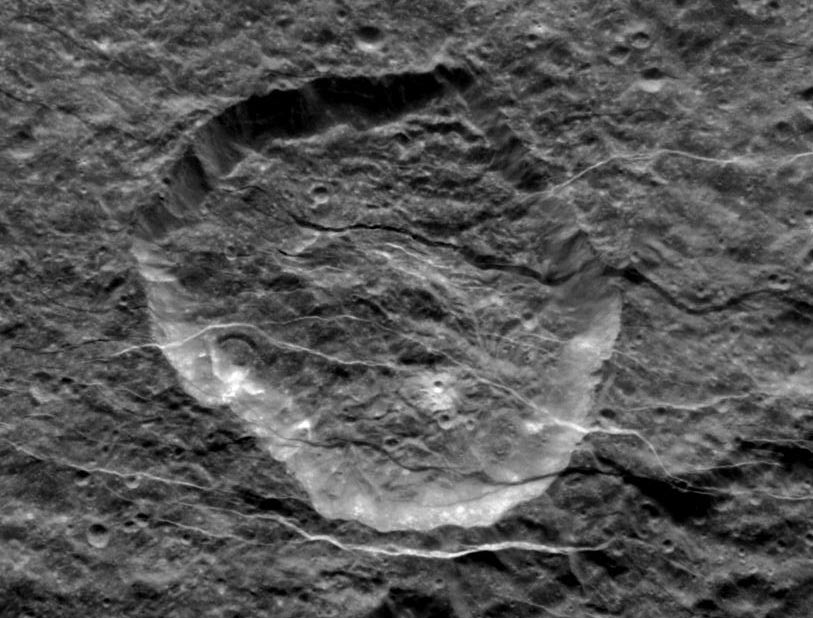
Photo by NASA/JPL/Space Science Institute
We've seen several features on the Moon and Mars shaped like hearts,
but this one may be a record for distance in the solar system: It’s on
Saturn’s moon Rhea, a ball of ice and rock about half the size of our
Moon and over a billion kilometers away! While it may look like a warm
sentiment, this heart on Rhea is so far from the Sun its temperature is
minus 175 C (minus 280 F), nearly cold enough to liquefy the nitrogen
and oxygen in our air. Better snuggle up!
Being a scientist, I have to say I approve of this infrared Spitzer Space Telescope image over all others: It’s actually
shaped like a real human heart. And I approve of the irony, too: It’s
located right next to the Heart Nebula featured at the top of this
gallery! They are both cavities carved out of the surrounding gas and
dust by the fierce light and winds of the young stars within, and
together they’re called the Heart and Soul Nebulae. Fittingly, this one
is the Heart, and the valentine-shaped one is the Soul.
This beautiful and nearly perfect heart is about 2 kilometers (1.2 miles) long and located nearly on the equator of Mars. The picture was taken by the Mars Reconnaissance Orbiter.
Like most valentine-shaped features on Mars, this is a collapsed
pit—you can see the ripple of sand dunes in the upper right part. It may
have formed eons ago when water just under the surface was
catastrophically released as a huge flash flood, causing the surface
above it to slump. It’s interesting how many ways this shape can be
formed on the surface of another world, and of course it’s purely
coincidence we associate it with love. Which is funny, given the god
Mars is actually named after.
What you see on the Sun depends on how you look at it. When you use a
telescope that can see X-rays, you can see the hottest features on its
surface, energized by the Sun’s complex magnetism. And, apparently, you
see that the Sun loves us.
This picture, taken with the joint Japanese Aerospace Exploration Agency/NASA observatory Hinode,
shows fierce activity above the Sun’s surface. Hot ionized gas flows
along the Sun’s towering magnetic field lines, forming
hundred-thousand-kilometer-long archs, giant loops, and … a heart? On
the right is a series of loops that, from Hinode’s angle, look very much
like a heart (I inset a clearer, rotated picture to make this more
obvious). Of course, this heart is glowing at a temperature of 8 million degrees Celsius, but maybe that’s just due to its magnetic attraction.
I have to leave you with this, somewhat enigmatic, picture. It was a
bit of graffiti spotted on a college campus. The photographer went to
the social networking site Reddit to ask what it meant ... and got the answer (some NSFW language there).
If you want to see what this equation represents, then go to the Wolfram Alpha site,
give it a second to do the calculation, then look for the graph labeled
“Implicit Plot.” You'll see which one I mean pretty easily. :)
Happy Valentine's Day!
Labels: Astronomy, Nature, Photographs
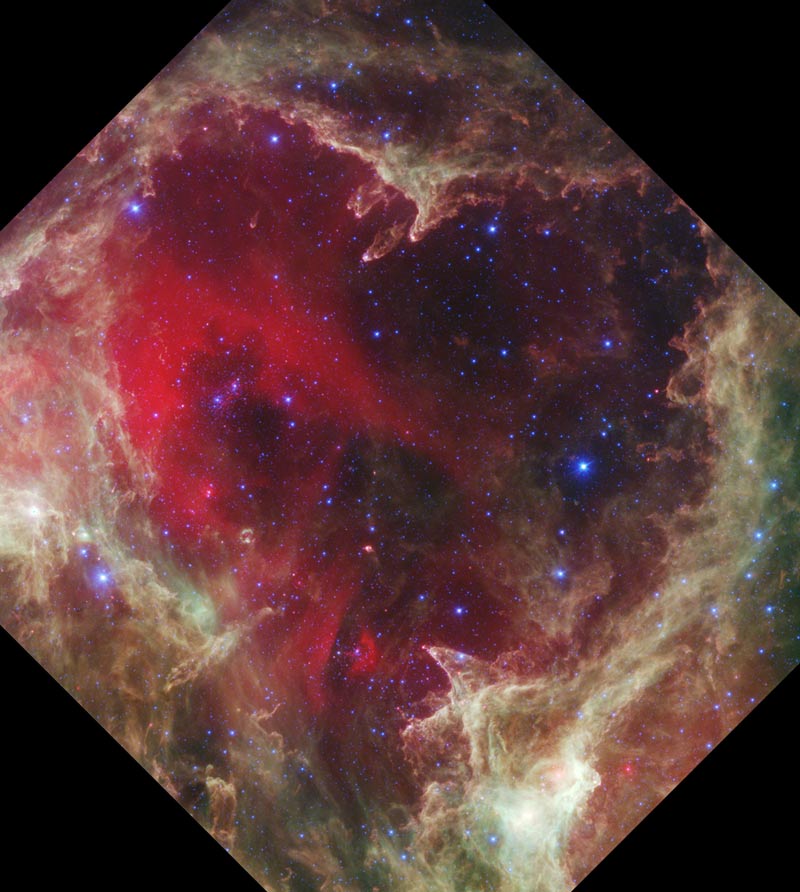
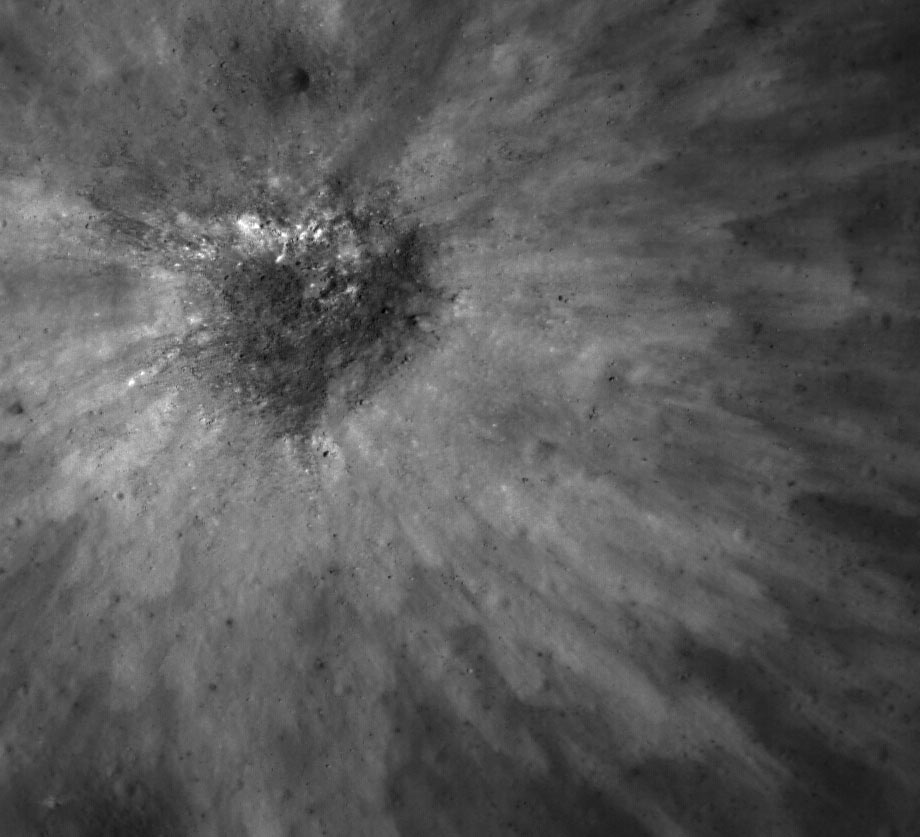
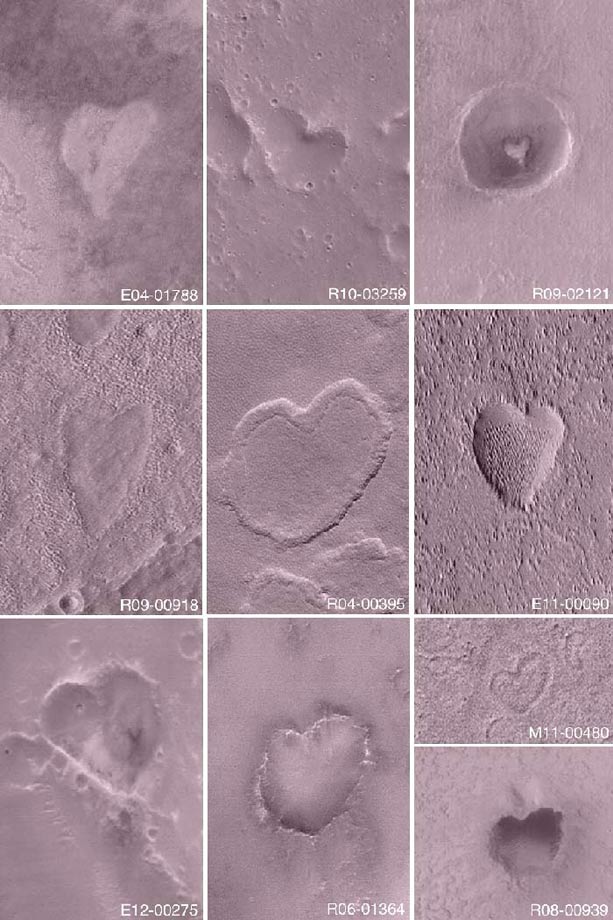
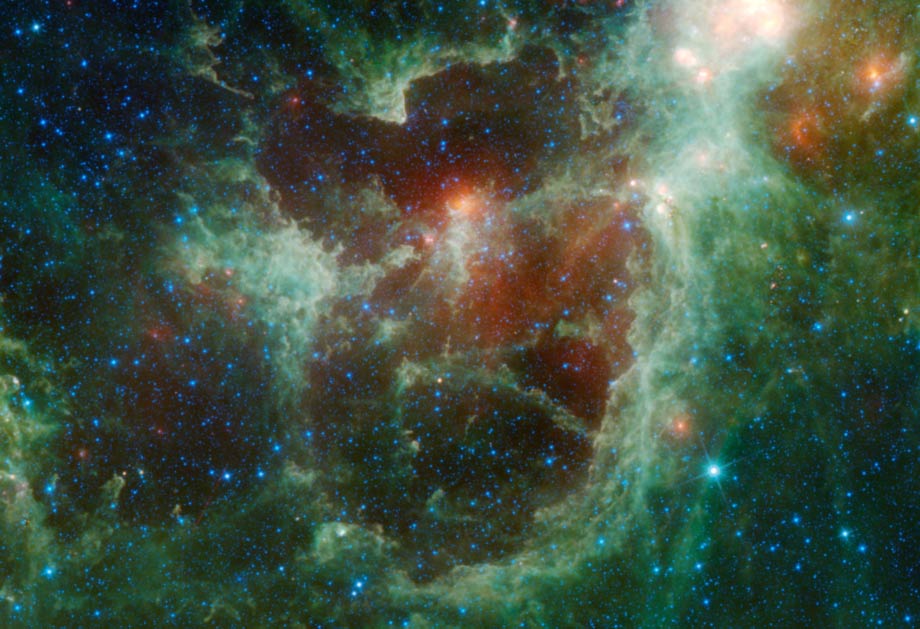
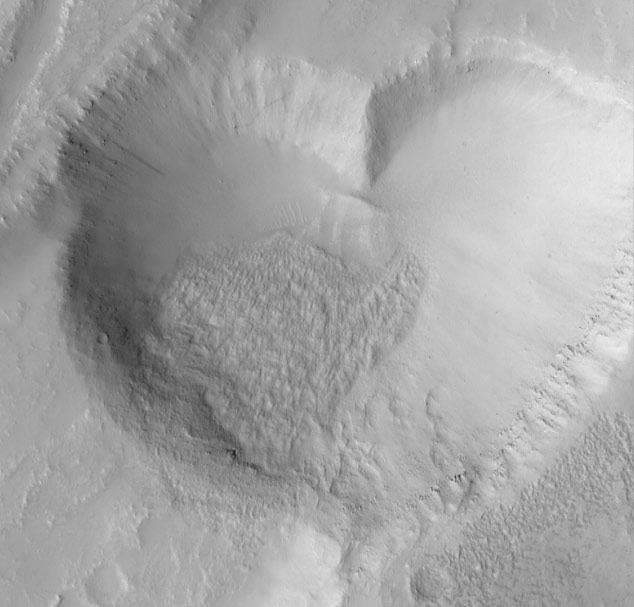
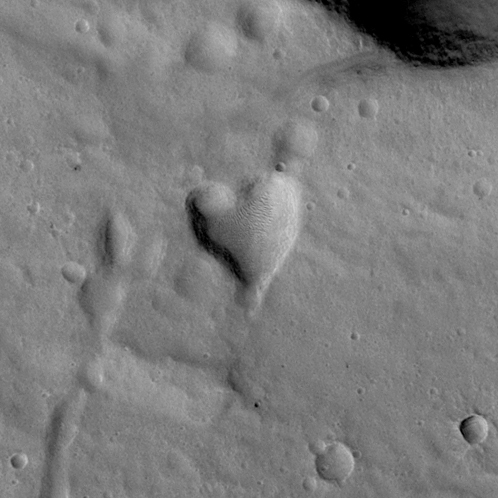
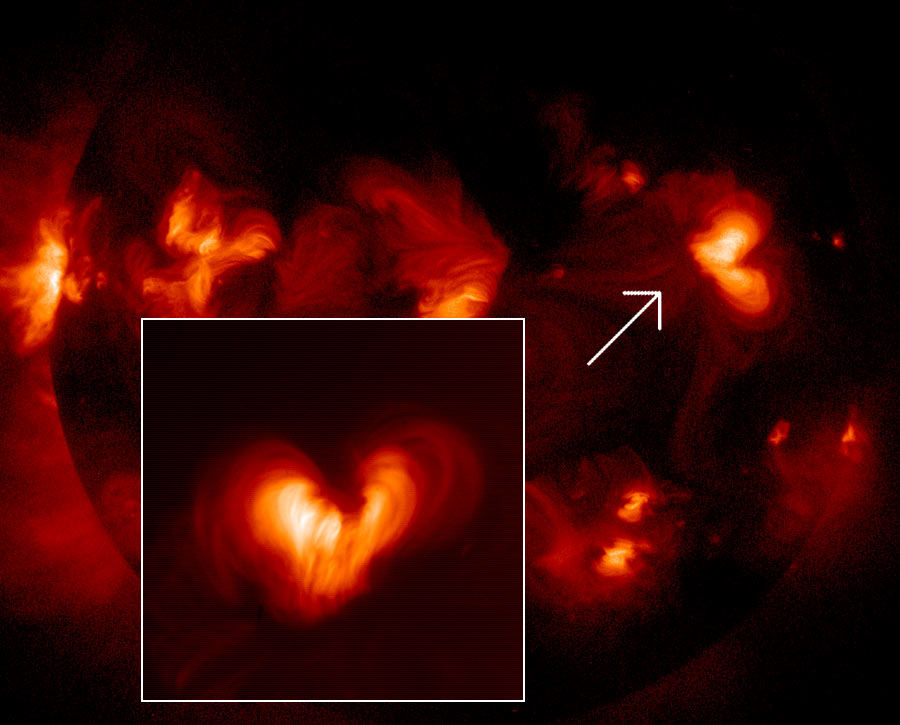
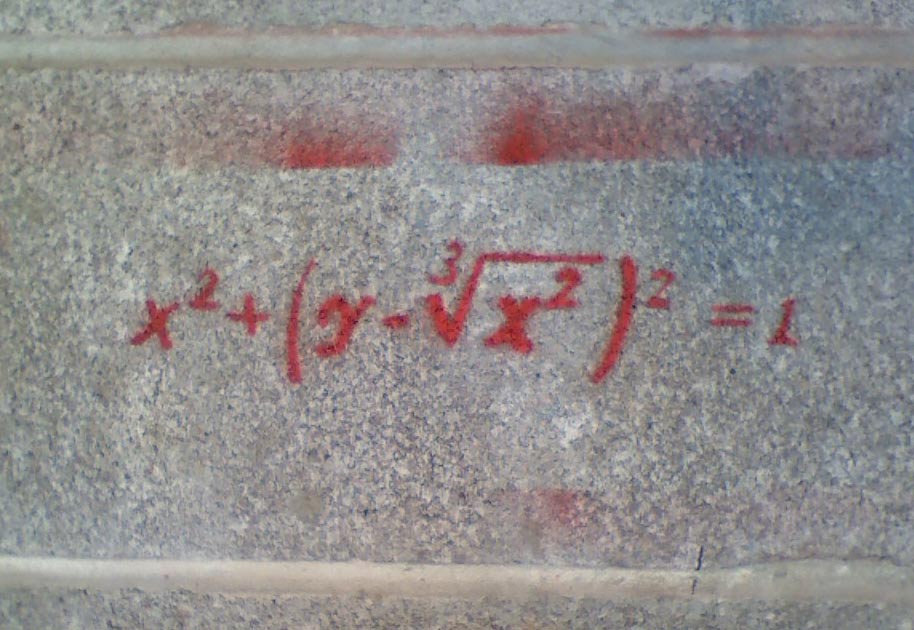

0 Comments:
Post a Comment
<< Home